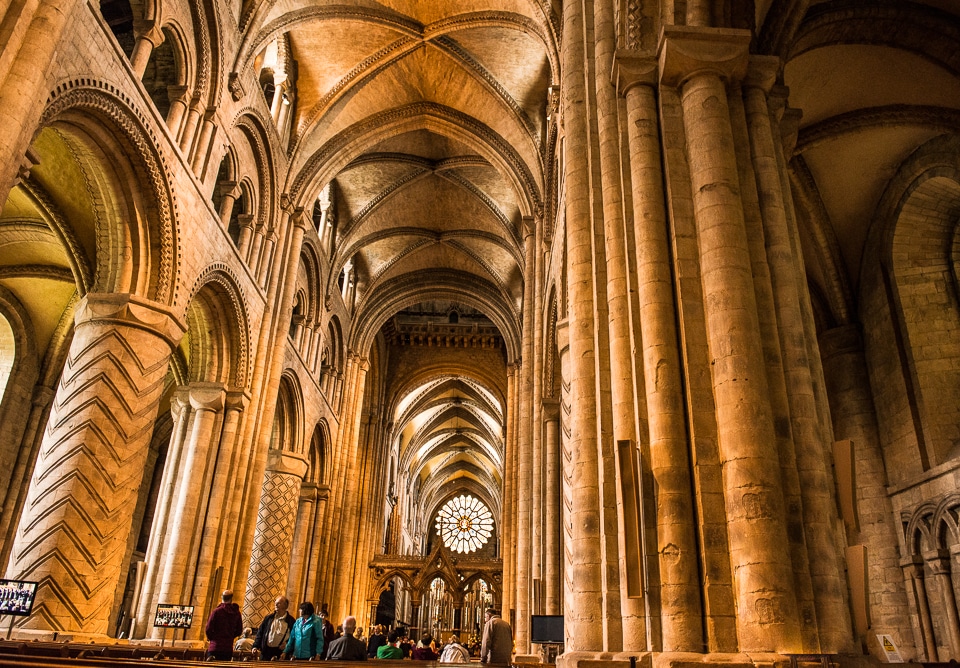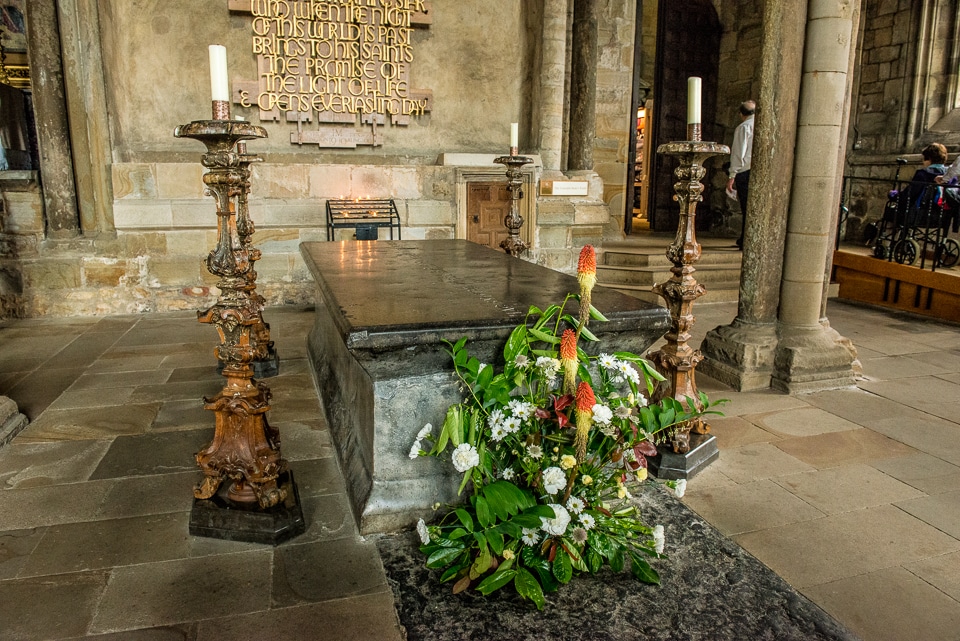
Sometimes it's good to take a look at the older cathedrals and realize the amount of stone and effort that went into constructing the massive churches of the Romanesque era before the discovery of the architectural techniques which allowed the lightness of the Gothic churches. The pillars and walls here in Durham, built in the 11th Century, are so massive when compared to the delicacy of the Exeter Cathedral, built almost 400 years later. The bulk is relieved slightly by carved design visible on the left pillars, but the overall sense is one of pure weight.

Bede was an English monk and scholar who lived in the 8th Century. He wrote or translated over 40 books, and his greatest work was The Ecclesiastical History of the English Peoplewhich I read in the original Latin long ago at the University of Minnesota. Bede is known as the Father of English History, which is quite a distinction since the English have more history than any other people I'm aware of. (Except perhaps the Irish.)
HIC SUNT IN FOSSA BEDAE VENERABILIS OSSA is the inscription on the stone which covers his tomb. A clever bit of Latin (that even rhymes) which translates simply as “In this grave are the bones of the Venerable Bede.” The clever bit, though, is using the word, “fossa” which literally means “something that's been dug,” for grave. Caesar used the same word to mean ditch. The usual Latin for grave is sepulcrum. But, of course, that doesn't rhyme.
Durham Cathedral is a UNESCO World Heritage site of the United Kingdom. Click the link to see our other posts about UNESCO World Heritage sites in the UK.
You can help yourself get ready for your own travels by reading our Get Started Planning Your Trip Now page.
We love traveling–with the right gear. We've gathered a lot of the stuff we use to make travel more pleasant and efficient all on one page. Shop our Travel Past 50 Amazon page to find our favorite gear. If you purchase something from the store, Travel Past 50, as an Amazon affiliate, may receive a small commission at no extra charge to you. Thanks.
We never leave home without our travel insurance. Nor should you. Search for the travel insurance from Allianz that best meets your needs, whether it be an annual plan or a single trip.
Note: This post and other posts on TravelPast50.com may contain paid or affiliate advertising links.
Up Your Travel Skills
Looking to book your next trip? Use these resources that are tried and tested by us. First, to get our best travel tips, sign up for our email newsletter. Then, be sure to start your reading with our Resources Page where we highlight all the great travel companies and products that we trust. Travel Accessories: Check out our list of all the accessories we carry to make getting there and being there a lot easier. Credit Cards: See our detailed post on how to choose the right travel rewards credit card for you. Flights: Start finding the very best flight deals by subscribing to Thrifty Traveler. Book your Hotel: Find the best prices on hotels with Booking.com. See all of the gear and books we like in one place on our Amazon shop.Got a comment on this post? Join the conversation on Facebook, Instagram, or Threads and share your thoughts!


Comments are closed.